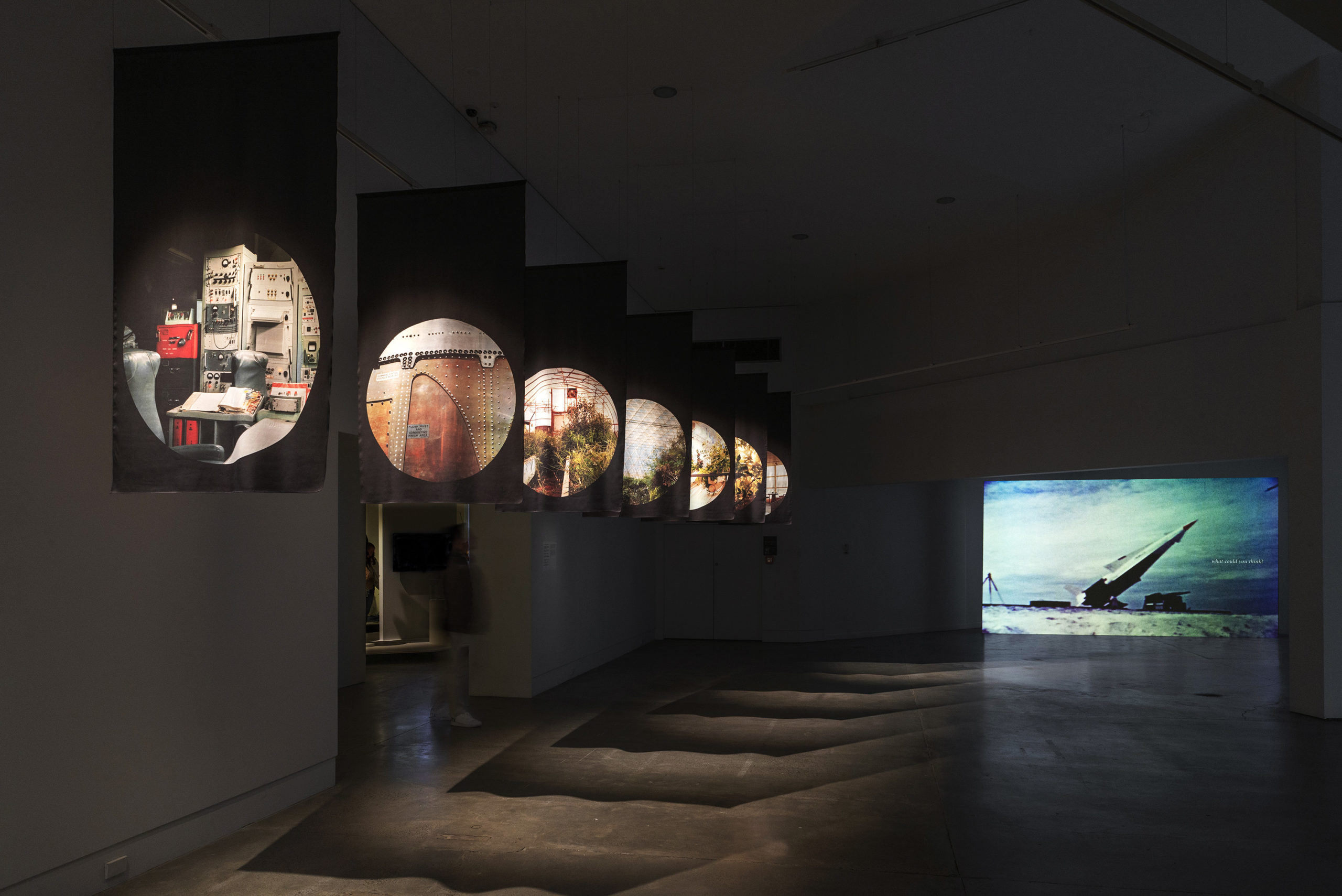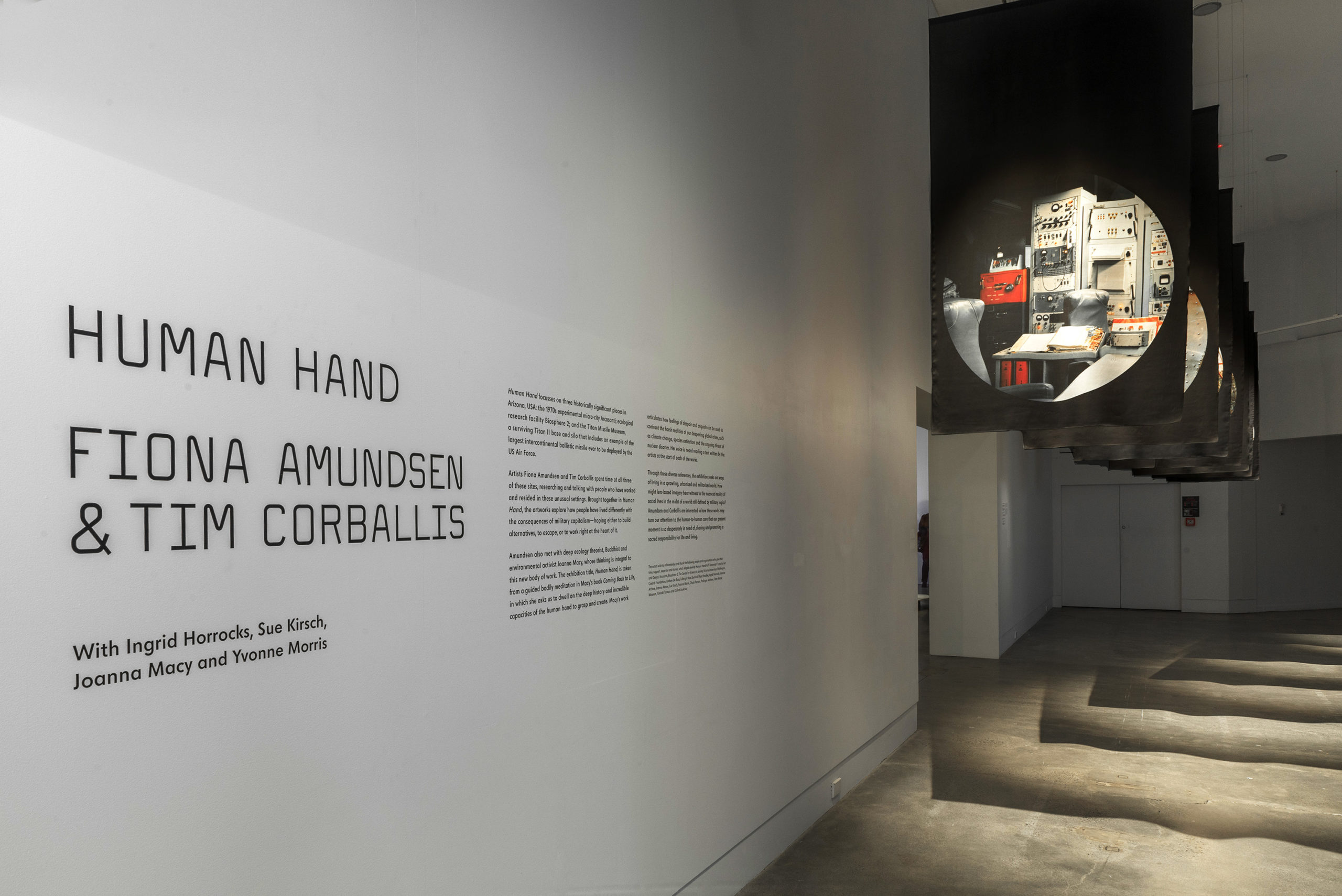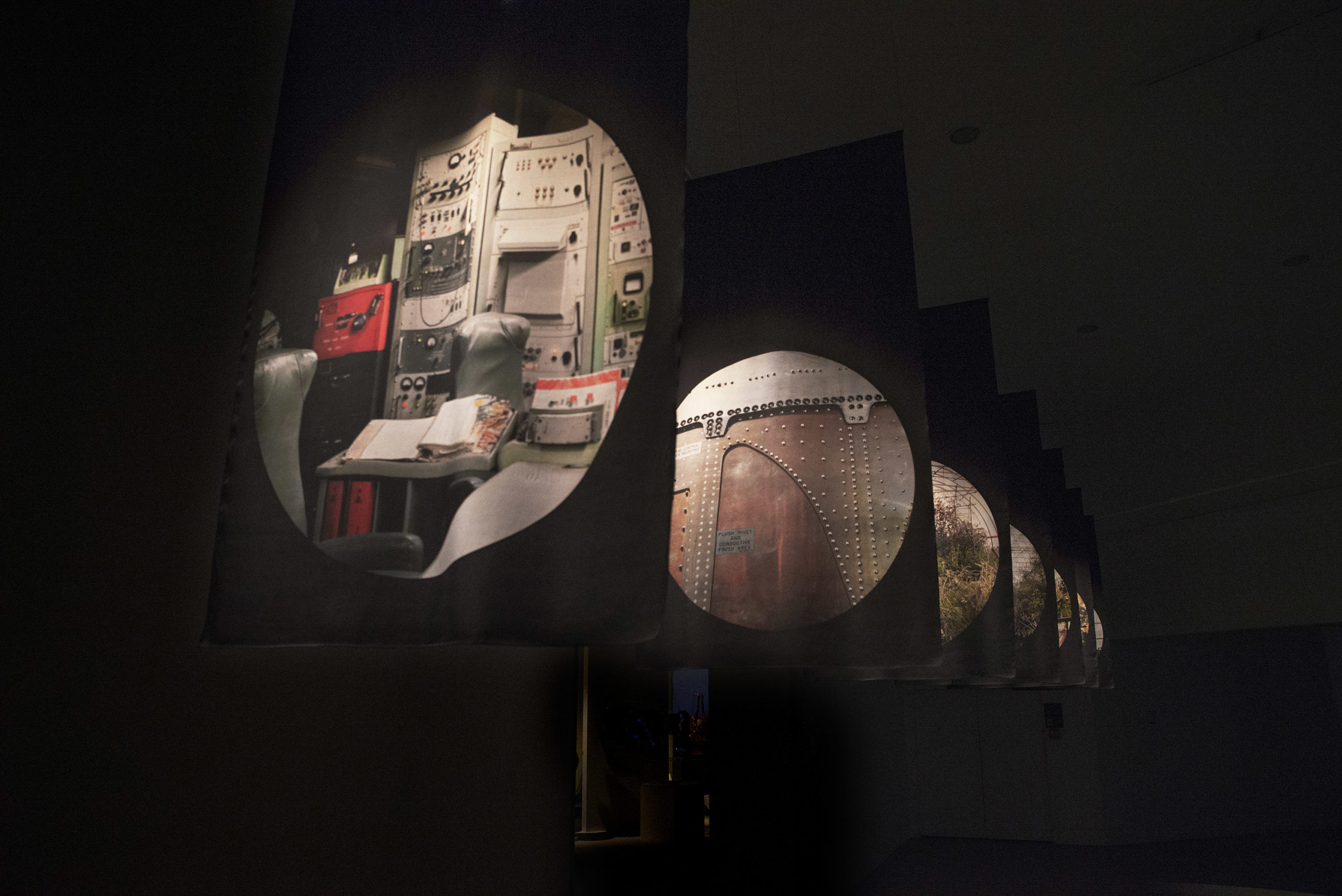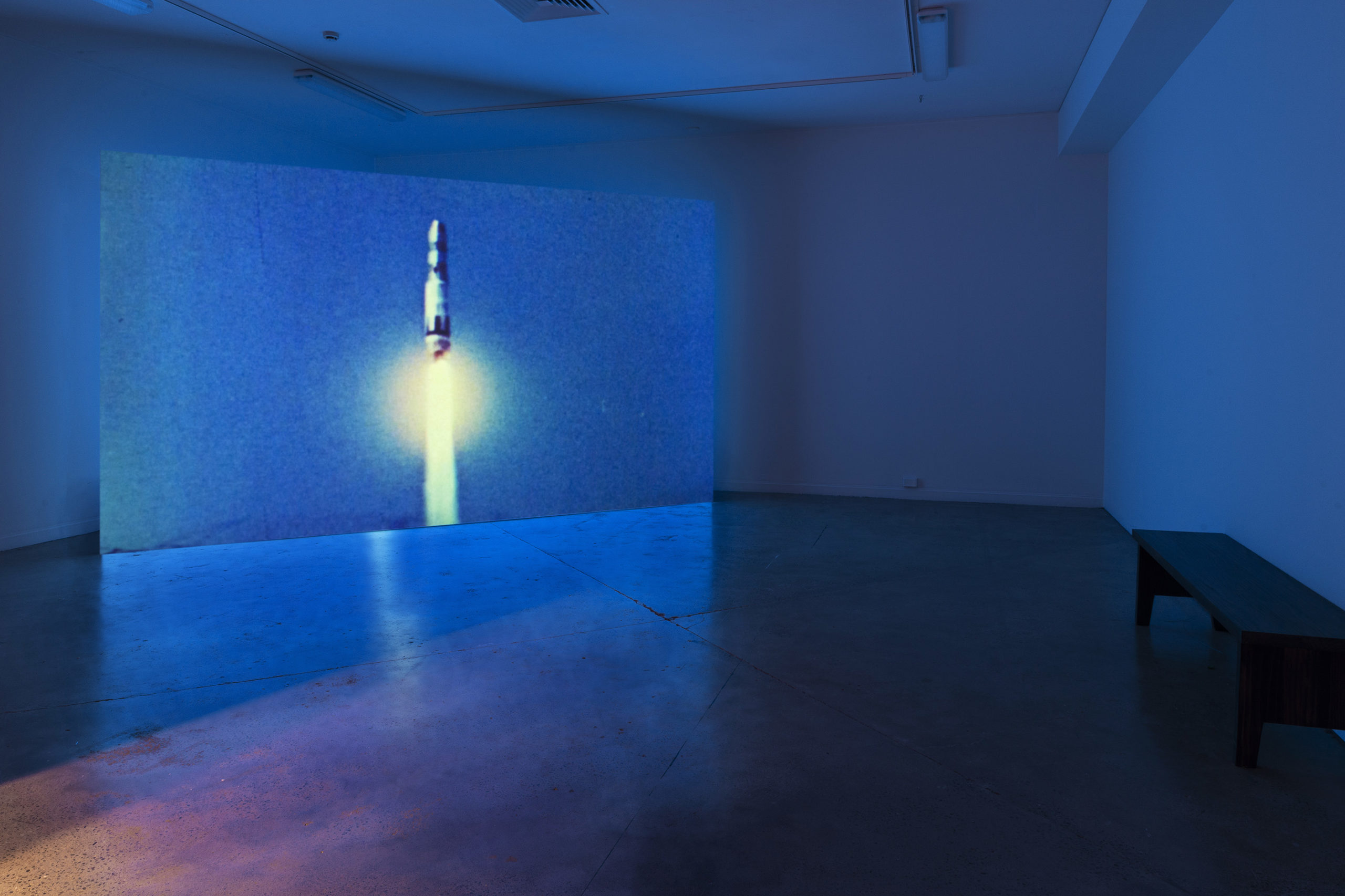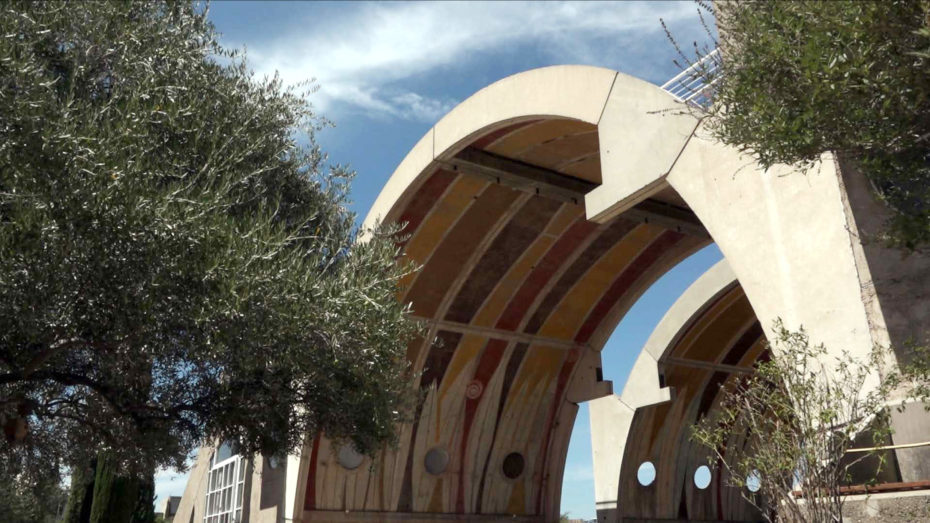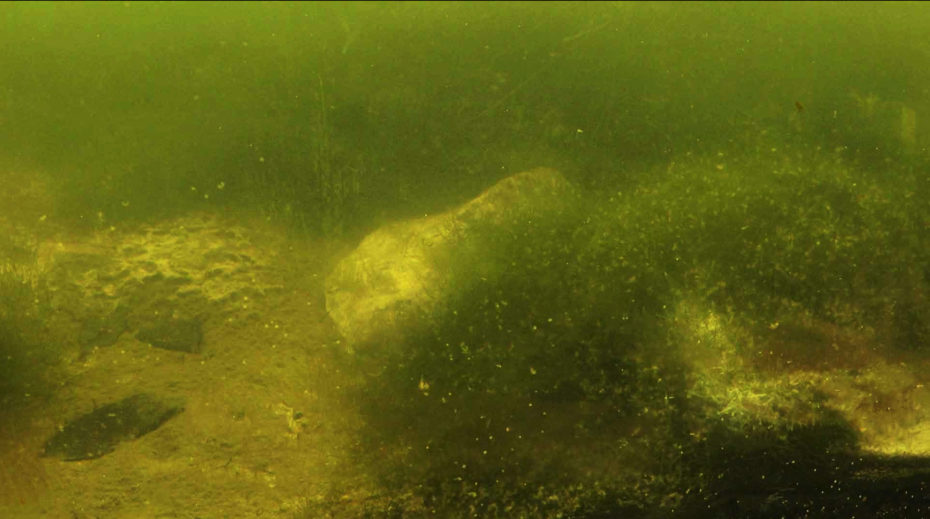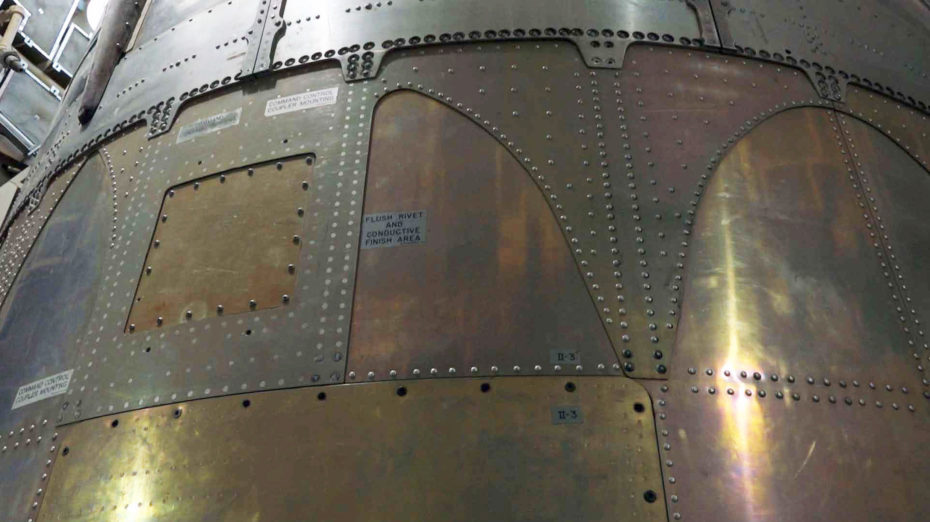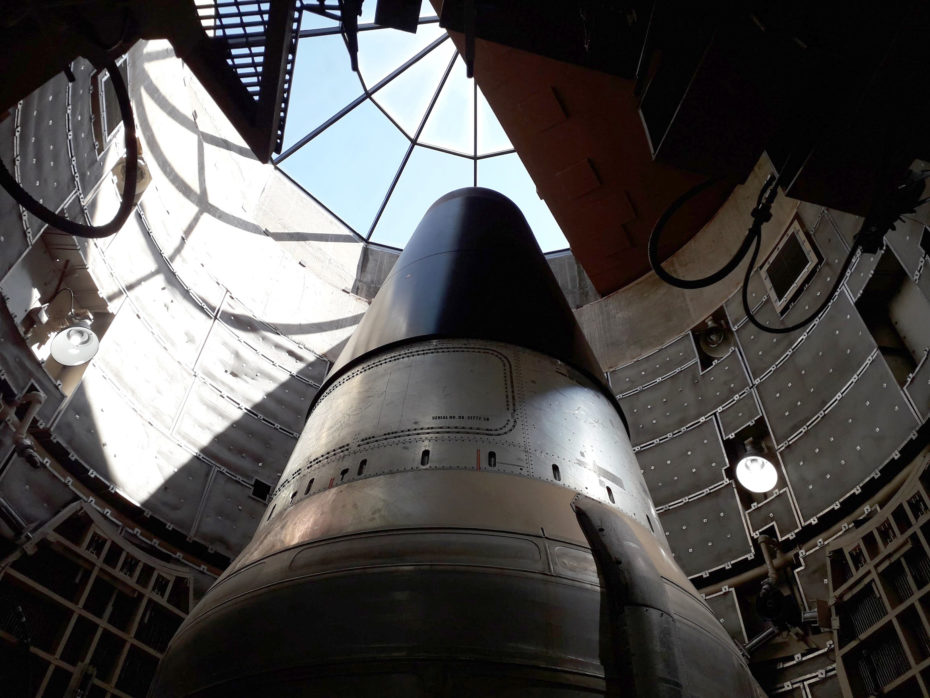Coming Back to Life (Human Hand)
(Collaboration with Tim Corballis)
Human Hand is a three-channel video installation. Comprised of three interrelated films, this project makes connection between three seemingly disparate sites—the micro-city Arcosanti; Biosphere 2, the world’s largest closed experimental ecological system, which tried to replicate earth’s biomes so that human life could be supported and maintained in Outer Space; and the Titan II Missile Museum, which houses a former Cold War era thermonuclear intercontinental ballistic missile. The sites are explored via the film’s speculation on what communal living, nuclear technologies and military capitalism can teach us about humanity and the processes required to care for each other and assume a sacred responsibility for life and living. The films utilise voiceover narratives and interviews that are edited together with archival and present day footage. A third voice is also present in the form of on-screen text that acts as an internalised listening to the film’s different aural and visual voices as they try to make sense of the ideologies that drive world-building and world-destroying impulses.
The film Social Bodies works with Sue Kirsch who has lived at Arcosanti since its construction in 1970. Situated in central Arizona, the micro-city was founded on the architectural and ecological principles of Italian-American architect Paolo Soleri (1919-2013). Kirsch describes what it was like to live at Arconsati, along with belonging to a community who worked collectively to build something beyond their own individual needs. As she says “we were doing something that in our minds was for mankind; we were going to set an example, not only of a new type of architecture but also of an effort of love.” Her voice is combined with present-day filming of Arcosanti; archival footage from the 1955 propaganda film American Harvest, which glorified the USA’s growing capitalist economy; and on-screen text from the United States Standard Industrial Classification Manual.
The film Command Performance works with Yvonne Morris who was a former Air Force Commander in charge of a Titan II missile, which now functions as a museum. This work’s title references an American produced Cold War propaganda film that celebrated modern industrialised and machine automated production methods for military systems. These words—command performance—are suggestive of the US military’s ability to be able to act, deliver, and manage its strategic responsiveness within a climate of heightening Cold War tensions. In other words, the US military needed to be able to manage a ‘command performance’ on point, and at every intersection of Cold War development. This work brings together Cold War era footage that focuses on military manufacturing and weapons testing, with present-day filming of a Titan II missile. Both footages are edited together with Yvonne’s voice which considers the human relationships that were integral to the missile programme.
The film To Stay Alive works with present-day filming from the site of Biosphere 2. This imagery is edited together with archival footage from America’s Cold War era space programmes. The archival footage functions to connect the images of Biosphere 2 with its original imperially driven aims—to support and maintain human life in Outer Space. This film includes a voiceover that reflects on what it might have been like to live inside of Biosphere 2, and to care for this artificially constructed world that reflects the real world that visibly exists outside of its domed glass structures.
The three films open with the voice of 91-year-old Joanna Macy, an anti-nuclear activist, who reads a text that reflects on relationships between industrial capital and military production. Macy is also an environmental activist, author, scholar of Buddhism, general systems theory, and deep ecologist. Active during the height of the Cold War era nuclear arms race, Macy developed the Nuclear Guardianship movement which explores how to be present to not only that which is invisible (i.e.: radiation) but also to the seemingly intractable issue of human-caused nuclear contamination and environmental devastation. Although Macy initially developed her scholarship in the late 1970s onwards (see Despair and Personal Power in the Nuclear Age, 1983), her ideas and thinking remain highly relevant to today’s cultural time where we struggle to find ways to live with and care for each other.
These films are accompanied by a series of corresponding silk banners featuring photographs from each of the sites. These banners materially mimic the type of military, government propaganda associated with polarising ideologies that are reproduced as slogans and imagery. As still images, they provide an expanded sense of what is also explored via the films—namely how lens-based documentary images can be utilised to foster person-to-person connections based in ethical acts of listening, embodied consciousness and relational witnessing.
Series Information
- Year: 2019 - 2020
- Dimension: Variable
- Medium: Three Channel HD Video, Silk Photographs

